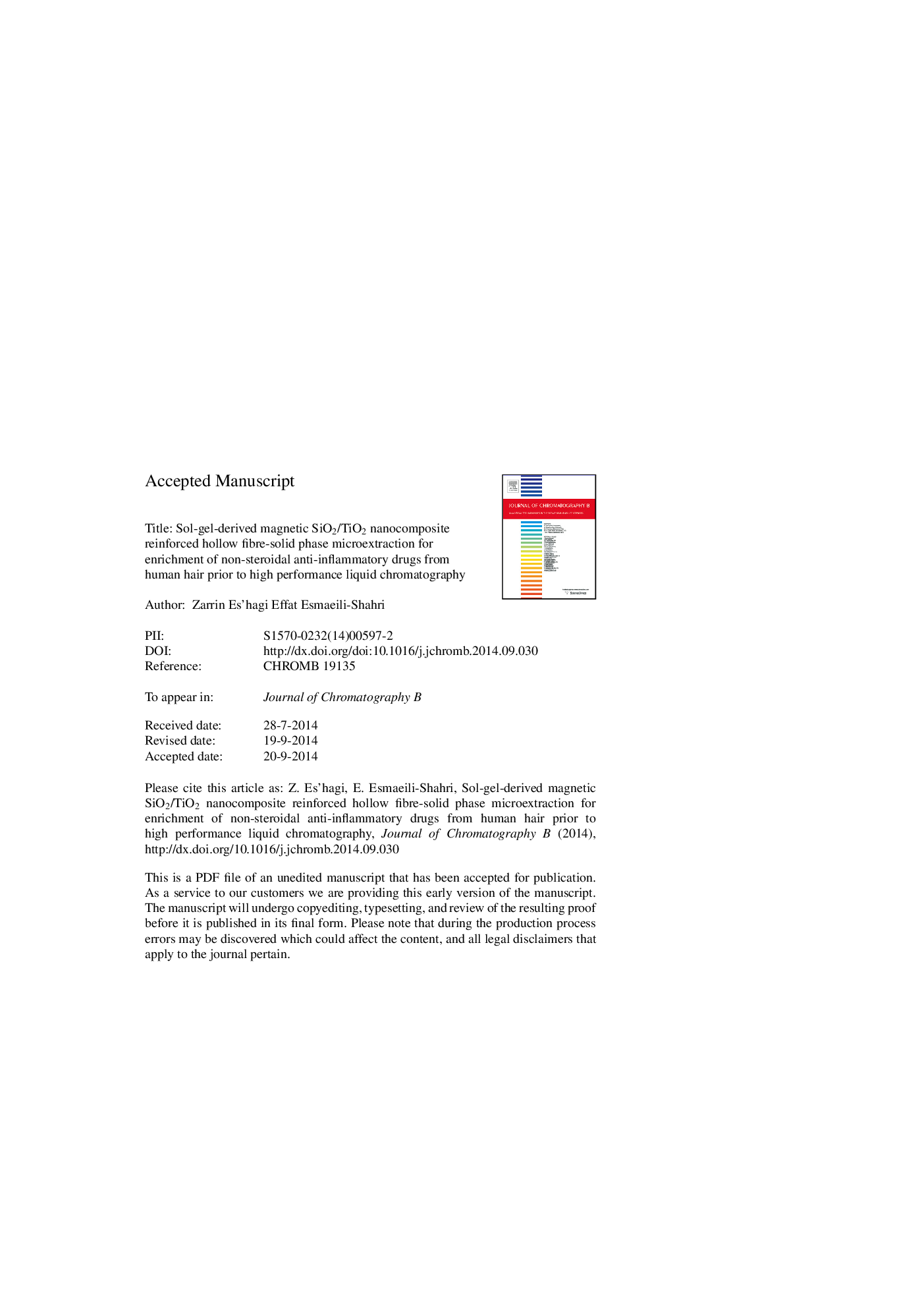| کد مقاله | کد نشریه | سال انتشار | مقاله انگلیسی | نسخه تمام متن |
|---|---|---|---|---|
| 7617507 | 1494070 | 2014 | 46 صفحه PDF | دانلود رایگان |
عنوان انگلیسی مقاله ISI
Sol-gel-derived magnetic SiO2/TiO2 nanocomposite reinforced hollow fiber-solid phase microextraction for enrichment of non-steroidal anti-inflammatory drugs from human hair prior to high performance liquid chromatography
دانلود مقاله + سفارش ترجمه
دانلود مقاله ISI انگلیسی
رایگان برای ایرانیان
موضوعات مرتبط
مهندسی و علوم پایه
شیمی
شیمی آنالیزی یا شیمی تجزیه
پیش نمایش صفحه اول مقاله

چکیده انگلیسی
Hollow fiber-solid phase micro-extraction (HF-SPME) technique containing sol-gel-derived Fe3O4/SiO2/TiO2 core-double shell nanocomposite as a novel high efficiency sorbent, coupled with high performance liquid chromatography was used to extraction and determination of six non-steroidal anti-inflammatory drugs; acetylsalicylic acid, naproxen, piroxicam, diclofenac, indomethacin and mefenamic acid, in hair samples. First, magnetite nanoparticles (Fe3O4-NPs) were synthesized by chemical co-precipitation of Fe(II) and Fe(III) ions (where the ratio of Fe(II) to Fe(III) is 1:2 and a non-oxidizing environment), in alkaline medium to produce magnetite particles. Subsequently, surface of Fe3O4-NPs was modified with SiO2 and TiO2 using layer-by-layer chemical technique. A core-shell structure of Fe3O4/SiO2/TiO2 composite was prepared by coating magnetite core particles with silica and titania layers. In the proposed method, NSAIDs were extracted by the synthesized nanocomposite and analyzed by HPLC. The parameters affecting the efficiency of magnetic nanoparticle (MNPs) assisted HF-SPME were investigated and optimized. The method validation was included and satisfying results with high pre-concentration factors (405 up to 2450) were obtained. It owes large surface area and porosity of the nano-adsorbent. Under the optimal conditions, the method detection limits (S/N = 3) were in the range of 0.01-0.10 μg mlâ1 and the limits of quantification (S/N = 10) between 0.04 and 0.30 μg mlâ1. Relative standard deviations were 3.09-6.61%. Eventually, the method was successfully applied to human hair after administration of NSAIDs.
ناشر
Database: Elsevier - ScienceDirect (ساینس دایرکت)
Journal: Journal of Chromatography B - Volume 973, 15 December 2014, Pages 142-151
Journal: Journal of Chromatography B - Volume 973, 15 December 2014, Pages 142-151
نویسندگان
Zarrin Es'haghi, Effat Esmaeili-Shahri,